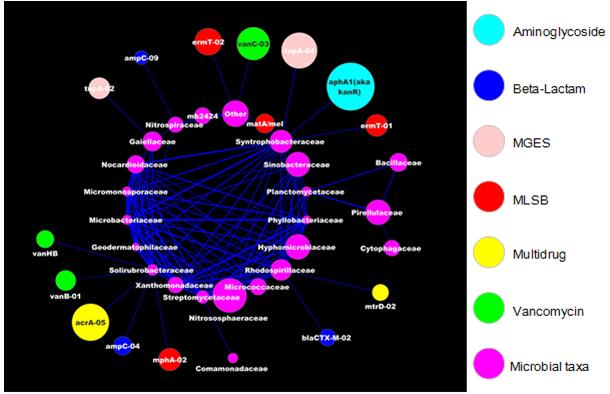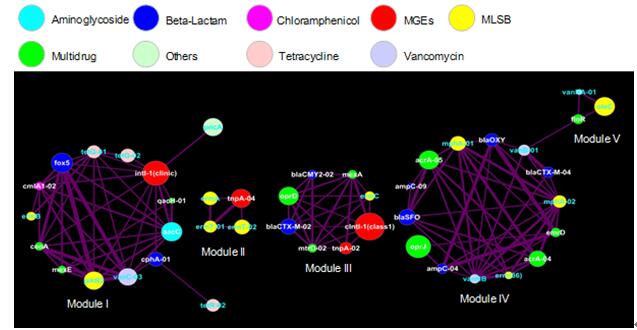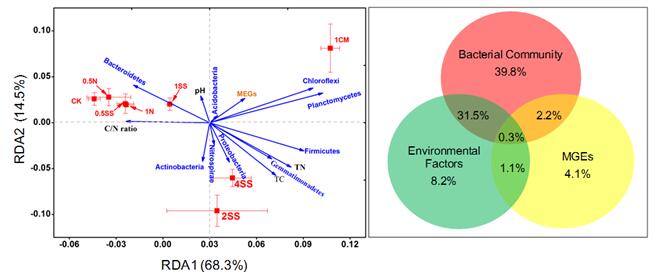Mass production and use of antibiotics has last for more than 70 years, greatly promoting the human health and agricultural production. However, previously using antibiotics largely and improperly may result in the spread of antibiotic resistance. Therefore, in 2001, world health organization(WTO) had regarded antibiotic resistance genes (ARGs) as one of the most challenging threat to human health of the 21st century and made strategic deployment to control ARGs on a global scale. In 2015, WHO put forward again to be careful use of antibiotics (Antibiotics: Handle With Care). The past several decades studies have shown that overuse of antibiotics in agriculture and breeding industry has led to the increase of bacteria ARGs. The rapid emergence and spread of ARGs greatly influenced the therapeutic effect of antibiotics and threatened to human health seriously.
Intensive livestock farming and municipal wastewater treatment system are the major two sources of contaminate of ARGs. In animal industry, the use of antibiotics has greatly stimulated the development of resistance genes. There contain abundant resistance genes in gut and feces of animals. Meanwhile, municipal wastewater gathers all kinds of wastewater in medicine, industry, agriculture, etc. However, most ARGs cannot be effectively removed by wastewater treatment processes. The vast majority of ARGs are discharged together with sewage sludge. Recycling agricultural use of animal manure and sewage sludge are the important way for urban sustainable biogeochemical controlling. However, untreating or processing substandard animal manure and adding sewage sludge directly will no doubt lead to the spread of resistance genes in the soil and eventually pose a threat to human health and the chainof food.
Although the results of previous studies have reflected that sewage sludge and animal manure as organic fertilizer may result in accumulation of resistance genes in soil, systematical studies are still scarce. On one hand, due to conventional quantitative PCR applied in most studies only aim at several or a dozen resistance genes so as not to response distribution of resistance gene in the soil comprehensively. On the other hand, most of the previous studies rested on laboratory and field experiments. A long-term trial can provide more direct data. In current, this kind of studies are still lacking.
Urban soil and biogeochemistry research group(Yongguan Zhu’s research team), Institute of Urban Environment, Chinese Academy of Sciences, gained insights into the effects of long-term application of sewage sludge and manure on the abundance and diversity of ARGs in soil by using highthroughput sequencing and high-throughput quantitative PCR (HT-qPCR). Compared with conventional quantitative PCR, HT-qPCR can process more than 5000 nanowell reactions per run, and quantitatively analyse of a variety of resistance genes at the same time. In this study, a total of 296 primer sets were used targeting almost all major classes of ARGs and mobile genetic elements (MGEs). In addition, of microbial community shifts was analysed by using Illumina sequencing. The results proved that genes conferring resistance to beta-lactams, tetracyclines, and multiple drugs were dominant in soil; the long-term application of sewage sludge and chicken manure significantly increased the abundance and diversity of ARGs (P< 0.05) in the soil.the maximum enrichment of a unique ARG was up to 3845 fold (mexF). The enrichment of MGEs suggested that the application of sewage sludge or manure may accelerate the dissemination of ARGs in soil through horizontal gene transfer (HGT). Mantel test and variation partitioning analysis (VPA) suggested that bacterial community shifts, is the major driver affecting the abundance and diversity of the antibiotic resistome. Moreover, some microbial taxa were revealed to be potential indicators and hosts of ARGs by network analysis. These results provide solid evidence for evaluating potential risk of pollution of antibiotic resistance genes led by urbanization and intensive agricultural activities, which may provide reference for recycling and safely using.animal manure and sewage sludge in our country.
The results of the study were published in Environment International上(Qinglin Chen, Xinli An, Hu Li, Jianqiang Su, Yibing Ma, Yong-Guan Zhu. Long-term field application of sewage sludge increases the abundance of antibiotic resistance genes in soil) on March 21, 2016.
Full text URL: http://www.sciencedirect.com/science/article/pii/S0160412016301064 doi:10.1016/j.envint.2016.03.026
This work was supported by the National Natural Science Foundation of China and the Strategic Priority Research Program of Chinese Academy of Sciences.

The network analysis revealing the co-occurrence patterns between ARG subtypes and microbial taxa.

The network analysis revealing the co-occurrence patterns among ARG subtypes.

Redundancy analysis (RDA) of the quantitative correlation between microbial taxa (N1% in any sample) and ARGs (A) and variation partitioning analysis (VPA) differentiating effects of bacterial community, environmental factors and mobile genetic elements (MGEs) on the resistome alteration (B).